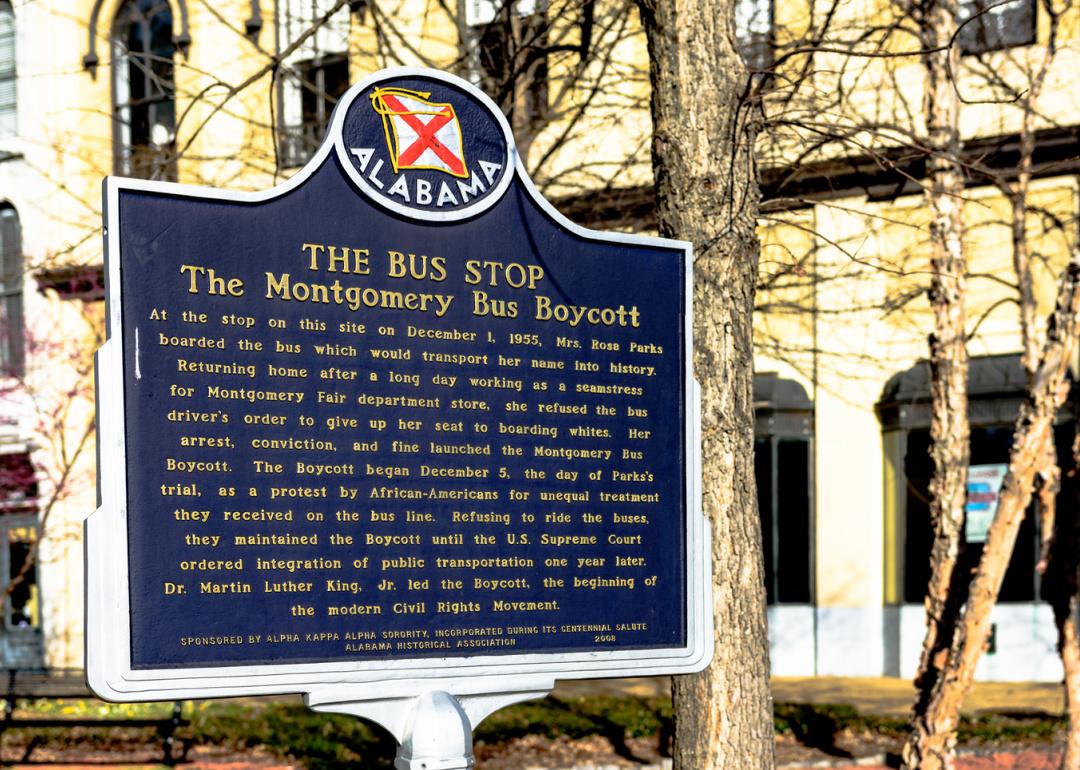
Explore historic sites commemorating Black history in Nebraska
Explore historic sites commemorating Black history in Nebraska
The legacies of influential Black Americans have not always been acknowledged, so it's not uncommon that modern-day residents may overlook the historic sites of their own cities.
While some historical Black figures in the U.S. are more well-known than others, there are in fact thousands of people dating back generations to 17th-century slavery who left traces of their visions and impacts all across the country. Whether prominent figures such as Robert Abbott, who founded one of the largest African American newspapers in the country, or more under-the-radar originators such as Obrey Wendell Hamlet, who cultivated unique vacation experiences in the Rocky Mountains, one thing's for certain: There is far more uncharted Black history in this country than charted.
Stacker identified historic sites commemorating Black history across 47 states, using the National Register of Historic Places. North Dakota, Vermont, Hawaii, and Wyoming did not have Black historic sites listed on the registry. While some states, especially in the South, are home to many sites central to the civil rights movement, Stacker listed the total sites in every state and the names of three historic sites where available. You can visit the full registry of 232 historic sites and explore the Civil Rights Trail to learn about additional locations across the U.S.
Read on to explore and learn about the historic sites celebrating Black history in your state, or read the national story here.
Nebraska by the numbers
- Sites commemorating Black history: 12 (1 with state significance, 2 with national significance)
- Jewell Building (Omaha)
- Malcolm X House Site (Omaha)
- Mayhew Cabin (Nebraska City)
James "Jimmy" Grant Jewell, a Republican leader and businessman who owned a pool hall, was an influential figure in Omaha's Black community. At the time, there were movie theaters and pool halls along North 24th Street, with a majority of the locales being for white people only. In 1922, Jewell had the vision to build a ballroom in Omaha's downtown area that would compete with other venues which occasionally hosted Black performers. Jewell hired an Omaha architect and opened the Jewell Building in 1923, which at the time was called Jewell's Hall.
Continue reading to see which sites commemorate Black history in other states in your area.
Colorado
- Sites commemorating Black history: 13 (3 with state significance, 1 with national significance)
- Winks Panorama (Pinecliffe)
- Fort Lyon (Las Animas)
- Ford, Barney L., Building (Denver)
In the early 1920s, entrepreneur Obrey Wendell "Winks" Hamlet decided to open a lodge where the Black middle class could enjoy leisure time and experience the outdoors with their loved ones. Wink's Lodge, also referred to as Wink's Panorama, soon became a go-to destination for Black travelers and the Black elite such as Lena Horne, Zora Neale Hurston, and Duke Ellington. The lodge held significance as being a rare mountain destination experience during a time of unrest. Hamlet managed the lodge until his death in 1965, and Wink's Panorama closed soon after.
Iowa
- Sites commemorating Black history: 14 (4 with state significance, 1 with national significance)
- Fort Des Moines Provisional Army Officer Training School (Des Moines)
- Iowa Federation Home for Colored Girls (Iowa City)
- Buxton Historic Townsite (Lovilia)
Although Buxton was a multiethnic community, the then-bustling coal-mining town had a large, growing Black population. Buxton Historic Townsite, founded in 1895, is named after Benjamin Buxton, who was the president of the Consolidation Coal Company. After World War I, train engines converted to using diesel fuel, and as a result, there was a decrease in demand for coal. Severe fires damaged the mines, many of the residents moved, and as a result, this caused the rapid demise of the once-thriving community.



